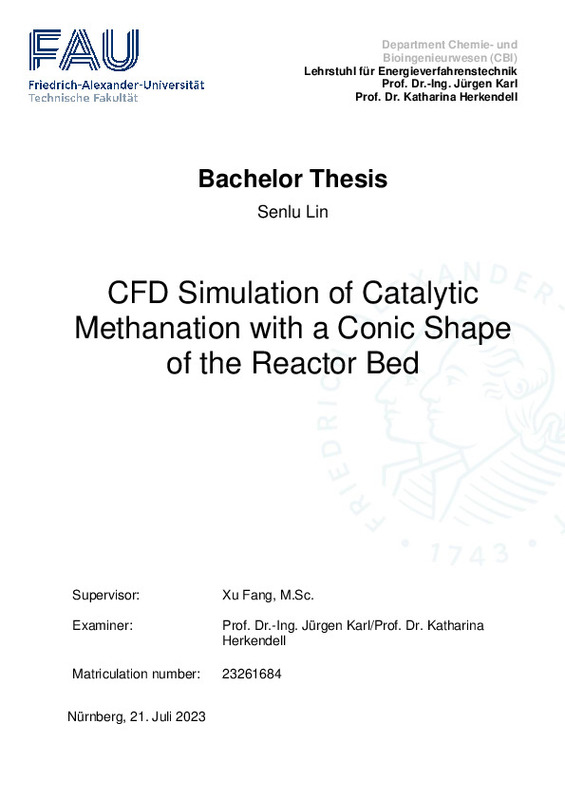JavaScript is disabled for your browser. Some features of this site may not work without it.
Buscar en RiuNet
Listar
Mi cuenta
Estadísticas
Ayuda RiuNet
Admin. UPV
CFD Simulation of Catalytic Methanation with a Conic Shape of the Reactor Bed
Mostrar el registro completo del ítem
Lin, S. (2023). CFD Simulation of Catalytic Methanation with a Conic Shape of the Reactor Bed. Universitat Politècnica de València. http://hdl.handle.net/10251/198740
Por favor, use este identificador para citar o enlazar este ítem: http://hdl.handle.net/10251/198740
Ficheros en el ítem
Metadatos del ítem
| Título: | CFD Simulation of Catalytic Methanation with a Conic Shape of the Reactor Bed | |||
| Otro titulo: |
|
|||
| Autor: | Lin, Senlu | |||
| Director(es): | ||||
| Entidad UPV: |
|
|||
| Fecha acto/lectura: |
|
|||
| Resumen: |
[ES] Se ha desarrollado un rector de lecho fijo para la metanación catalítica del CO2 en el departamento de procesos energéticos de la Universidad de Erlangen-Núremberg (FAU). Este reactor tiene como objetivo conseguir ...[+]
[EN] A fixed-bed reactor for the catalytic methanation of CO2 has been developed at the Department of Energy Processes of the University of Erlangen-Nuremberg (FAU). This reactor aims to achieve both efficient catalytic ...[+]
|
|||
| Palabras clave: |
|
|||
| Derechos de uso: | Reserva de todos los derechos | |||
| Editorial: |
|
|||
| Titulación: |
|
|||
| Tipo: |
|
recommendations
Este ítem aparece en la(s) siguiente(s) colección(ones)
-
ETSII - Trabajos académicos [10484]
Escuela Técnica Superior de Ingenieros Industriales







